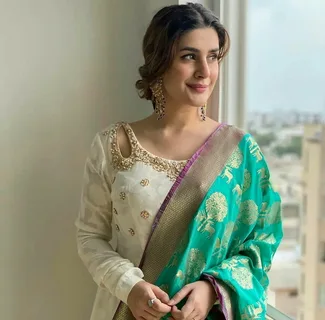Fashion is an integral part of Pakistan’s culture and society, with women’s clothing being a reflection of the country’s diverse traditions, regional influences, and modern trends. The clothing industry in Pakistan thrives on both traditional and contemporary designs, offering a variety of choices for women of all age groups. In this comprehensive guide, we will delve into the various styles, fabrics, and trends that define women’s clothing in Pakistan.
Traditional Clothing Styles for Women in Pakistan
1. Shalwar Kameez: The shalwar kameez is the national dress of Pakistan and remains the most popular choice for women across the country. This outfit consists of a long tunic (kameez) paired with loose-fitting trousers (shalwar). It is known for its versatility, as it can be styled for both casual and formal occasions. Women often accessorize their shalwar kameez with dupattas, which are long scarves.
2. Saree: The saree is a graceful and elegant garment that consists of a long piece of fabric draped around the body, with one end usually draped over the shoulder. While sarees are not as commonly worn on a daily basis in Pakistan, they are a popular choice for weddings, formal gatherings, and cultural events.
3. Lehenga Choli: A traditional outfit often worn at weddings and festive occasions, the lehenga choli consists of a long, flared skirt (lehenga) paired with a fitted blouse (choli) and a dupatta. The intricate embroidery and embellishments on lehengas make them a stunning choice for celebrations.
4. Gharara and Sharara: These traditional outfits have deep roots in the Mughal era. Ghararas feature wide-legged pants with intricate embellishments, while shararas have a more flared silhouette. Both are paired with long kameez and dupattas, making them a popular choice for weddings and formal events.
5. Abayas and Hijabs: With the influence of Islamic culture, many women in Pakistan opt for abayas and hijabs. Abayas are long, flowing garments that provide modest coverage. They are available in various styles and fabrics, often adorned with embroidery and embellishments.
Modern Clothing Trends for Pakistani Women
1. Fusion Wear: Fusion wear combines traditional elements with contemporary designs. For example, women may pair a traditional kameez with jeans or opt for a modern cut in their shalwar kameez. This trend is popular among young women who seek a blend of comfort and style.
2. Western Wear: The influence of Western fashion is evident in the wardrobes of urban Pakistani women. Dresses, skirts, blouses, and trousers are commonly worn, especially in metropolitan cities like Karachi, Lahore, and Islamabad.
3. Pret Wear: Ready-to-wear (pret) collections have gained immense popularity in recent years. Brands like Khaadi, Sapphire, and Alkaram offer stylish and affordable pret wear that caters to the modern woman’s busy lifestyle.
4. Lawn Suits: Lawn fabric is a staple for Pakistani women, especially during the scorching summer months. Lawn suits are lightweight, breathable, and available in a plethora of prints and designs. Designer lawn collections often create a buzz in the fashion industry.
5. Formal and Party Wear: Embellished gowns, maxi dresses, and heavily embroidered suits are popular choices for formal events and parties. Designers like Maria B, Sana Safinaz, and Elan are known for their exquisite formal wear collections.
Fabrics Used in Women’s Clothing
1. Lawn: A lightweight and breathable fabric, lawn is perfect for the hot and humid summers in Pakistan. It is commonly used for casual wear.
2. Cotton: Cotton is a versatile fabric that is comfortable and easy to maintain. It is widely used for everyday wear.
3. Silk: Silk is a luxurious fabric often used for formal and bridal wear. Its smooth texture and elegant appearance make it a favorite for special occasions.
4. Chiffon: Chiffon is a sheer and lightweight fabric that is commonly used for dupattas and formal dresses. It adds a touch of elegance to any outfit.
5. Velvet: Velvet is a rich and warm fabric, ideal for winter wear. It is often used for formal and bridal outfits.
6. Khaddar and Linen: These fabrics are perfect for winter clothing as they provide warmth and comfort. They are commonly used for casual and semi-formal wear.
Regional Influences on Women’s Clothing
1. Punjab: Punjabi women often wear vibrant and colorful shalwar kameez with intricate embroidery. Phulkari embroidery is a traditional craft that is highly valued in this region.
2. Sindh: Sindhi women are known for their traditional ajrak prints and mirror work. The region’s vibrant cultural heritage is reflected in its clothing.
3. Balochistan: Balochi dresses are characterized by heavy embroidery and unique patterns. The traditional attire includes long dresses with wide sleeves and colorful embellishments.
4. Khyber Pakhtunkhwa: Women in Khyber Pakhtunkhwa often wear modest and elegant shalwar kameez with intricate embroidery. The use of thick fabrics is common due to the colder climate.
5. Kashmir: Kashmiri women are known for their beautiful Pashmina shawls and traditional dresses. The intricate embroidery and luxurious fabrics are a hallmark of this region.
Popular Fashion Brands for Women in Pakistan
1. Khaadi: Khaadi is a household name in Pakistan, known for its vibrant prints and high-quality fabrics. The brand offers a wide range of casual and formal wear.
2. Gul Ahmed: Gul Ahmed is one of the oldest and most trusted textile brands in Pakistan. Their lawn collections are highly sought after.
3. Sana Safinaz: Sana Safinaz is known for its elegant and sophisticated designs. The brand offers both pret and unstitched collections.
4. Maria B: Maria B is a leading designer brand known for its exquisite formal wear and bridal collections.
5. Nishat Linen: Nishat Linen offers a wide range of stylish and comfortable clothing for women. Their prints are known for their creativity and uniqueness.
6. Sapphire: Sapphire is popular for its high-quality fabrics and trendy designs. The brand caters to women of all age groups.
Seasonal Clothing Preferences
1. Summer Wear: During the hot summer months, women prefer lightweight and breathable fabrics like lawn and cotton. Pastel colors and floral prints dominate the fashion scene.
2. Winter Wear: In winter, women opt for warmer fabrics like khaddar, linen, and velvet. Darker shades and bold patterns are more popular during this season.
3. Festive and Wedding Season: The festive and wedding season sees a surge in demand for heavily embellished outfits, silk dresses, and intricate lehengas. Bright colors and luxurious fabrics are preferred.
Cultural Significance of Women’s Clothing
Women’s clothing in Pakistan is not just about fashion; it is deeply rooted in cultural and religious values. Traditional outfits often symbolize modesty and grace, while modern trends reflect the evolving lifestyle of Pakistani women. Clothing choices are influenced by factors such as regional traditions, religious beliefs, and social norms.
Conclusion
The fashion landscape for women in Pakistan is a beautiful blend of tradition and modernity. From the timeless elegance of shalwar kameez to the contemporary appeal of fusion wear, women have an array of choices to express their individuality and style. The country’s rich cultural heritage and thriving fashion industry ensure that women’s clothing in Pakistan will continue to evolve and flourish.






